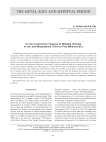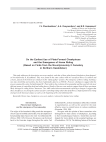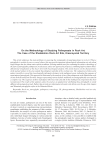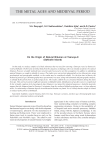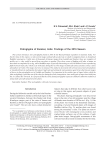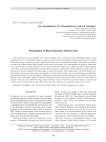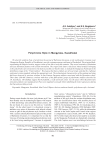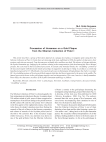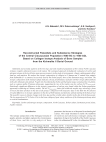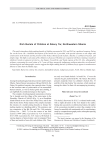The metal ages and medieval period. Рубрика в журнале - Archaeology, Ethnology & Anthropology of Eurasia
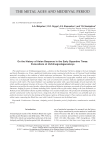
On the history of Asian Bosporus in the early Byzantine times: excavations at Verkhnegostagaevskoye
Статья
Бесплатно

On the time and context of the earliest bronze mirrors in the Northern Pontic region
Статья обзорная
Бесплатно
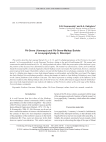
Pit-grave (Yamnaya) and pit-grave-maikop burials at Levoyegorlyksky-3, Stavropol
Статья обзорная
Бесплатно
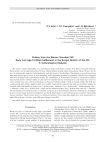
Статья научная
This article outlines the findings of a technological study of the Kulai ceramics from Barsov Gorodok III/6 near Barsova Gora, on the right bank of the Ob River, Tyumen Region, Khanty-Mansi Autonomous Okrug. We describe the site, its stratigraphic sequence and planigraphy, and the layout of the dwellings. The analysis was performed using binocular microscopy of traces in fresh transverse and longitudinal fractures of potsherds. Results were compared with those relating to the experimental sample. The examination of 50 specimens revealed a conservative tradition typical of the potters’ substrate skills. Its characteristics included the use of homogeneous clay mined near reservoirs in one and the same area, and the technology was based on bottom-to-body or body-to-bottom coiling. The body was constructed by side coiling. Adaptive skills were variable. Four mixed recipes for clay paste are described, making up one-fifth of the total number of recipes: clay + broken stone + chamotte; clay + broken stone + liquid organics; clay + + chamotte + sand; clay + broken stone + sand; and two unmixed recipes: clay + broken stone; and clay + chamotte. The mechanical processing of surface is variable, being based on 16 techniques and their combinations. Techniques used at various stages of pottery manufacture are listed. Simple paste recipes indicate groups of potters representing various traditions. Mixed recipes attest to a blend of traditions. Those using them might have been monocultural or multicultural groups of potters using different techniques and skills.
Бесплатно

Prospection studies of Bohai graves near Kraskinskoye fortified settlement, Primorsky krai
Статья
Бесплатно
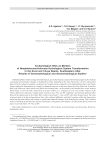
Remain s of tapestry from a Xiongnu (early 1st century ad) burial in mound 22 at Noin-Ula
Статья обзорная
Бесплатно
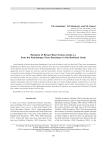
Remains of brown bear (Ursus arctos L.) from the Kaninskaya cave sanctuary in the Northern Urals
Статья
Бесплатно
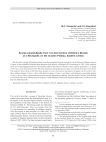
Статья
We describe a group of Egyptian faience scarabs unearthed from the necropolis on the Iluraton Plateau, Eastern Crimea, by the expedition from the State Museum of the History of Religion (St. Petersburg) in 1987–1990. Artifacts made of so-called Egyptian faience were found in eight of the sixty-two burials—those of g irls aged below 1.5, dating to the 1st to early 2nd centuries AD. The most numerous among the faience items were beads in the form of scarabs. The analysis shows them to fall into three groups in terms of presence and nature of images on the reverse side: those without images (3 spec.), those with abstract images (3 spec.), and those with anthropo-zoomorphic images (2 spec.). In two cases, representations point to specifi c Egyptian workshops. Scarabs in girls’ burials of the Roman period elaborate on the thanatological imagery, which originated among the Scythian-Saka tribes of Eurasia in the mid-1st millennium BC.
Бесплатно

